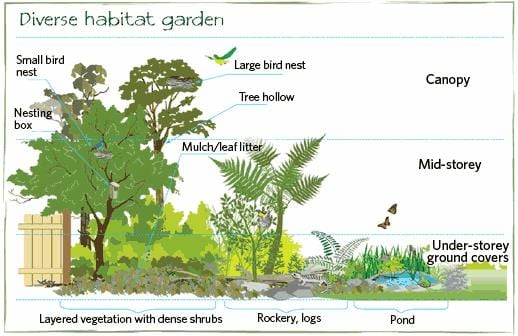Hilton Head Landscapes Fundamentals Explained
Hilton Head Landscapes Fundamentals Explained
Blog Article
The Basic Principles Of Hilton Head Landscapes
Table of ContentsFascination About Hilton Head LandscapesTop Guidelines Of Hilton Head LandscapesNot known Facts About Hilton Head LandscapesHilton Head Landscapes Things To Know Before You BuyHilton Head Landscapes - Truths10 Simple Techniques For Hilton Head LandscapesHilton Head Landscapes - Truths
Line produces all forms and patterns and can be made use of in a selection of methods the landscape. Line in the landscape is produced by the edge in between two materials, the outline or silhouette of a form, or a long direct feature. Lines are an effective device for the designer due to the fact that they can be made use of to produce a boundless selection of forms and types, and they manage movement of the eye and the body.

Lines can have several qualities, such as those explained below, however they normally serve different purposes. Number 1. Lines in the landscape - landscape design hilton head. The properties of lines figure out exactly how individuals react to the landscape, both emotionally and literally. Straight lines are structural and strong; they create a formal personality, are normally related to a balanced style, and lead the eye directly to a focal factor.
Hilton Head Landscapes - Questions
Straight lines are frequently located in hardscape edges and product. Bent lines develop a casual, natural, unwinded personality that is associated more with nature and asymmetrical equilibrium. Curved lines relocate the eye at a slower pace and include mystery to the room by developing hidden views. Upright lines relocate the eye up, making a room feel larger.
Upright lines in the landscape include tall, narrow plant product, such as trees, or tall structures, such as an arbor or a bird house on a pole. Straight lines relocate the eye along the ground aircraft and can make a room feel larger. Reduced lines are extra controlled and develop a sensation of rest or repose.
The 9-Minute Rule for Hilton Head Landscapes
Reduced lines are produced by reduced garden wall surfaces, walkways, and short hedges. Lines are used to attract forms on a strategy. In plan sight, they define plant beds and hardscape areas. Lines are also developed by the vertical types of constructed functions and plant material. There are three primary line kinds that create form in the landscape: bedlines, hardscape lines, and plant lines.
Bedlines connect plant material to the house and hardscape due to the fact that the eye complies with the line, relocating the gaze via the landscape. Hardscape lines are produced by the side of the hardscape, which delineates the constructed structure. Line can also be developed by long and slim products, such as a fence or wall surface.
The Best Guide To Hilton Head Landscapes
Kind is located in both hardscape and plants, and it is commonly the leading aesthetic aspect that spatially organizes the landscape and usually figures out the design of the yard. The kind of frameworks, plant beds, and yard ornaments likewise identifies the general kind style of the garden. Formal, geometric kinds include circles, squares, and polygons.
Plants create form in the garden via their lays out or silhouettes, but form can likewise be defined by a space or unfavorable area in between plants - landscaping hilton head sc (https://pxhere.com/en/photographer/4299392). Circles can be full circles, or they can be divided into half circles or circle segments and combined with lines to create arcs and tangents
Excitement About Hilton Head Landscapes
Circles are a solid style kind due to the fact that the eye is always drawn to the center, which can be made use of to emphasize a focal point or connect other forms. Circular forms in hardscape and grass panels.
The square type can also be fractional and previously owned continuously to create a grid pattern. Unlike circles, squares are more powerful on the edges, which can be aligned or overlapped to develop distinct patterns and even more complicated kinds. Polygons are many-sided forms with straight edges. Triangulars, for instance, are three-sided polygons.
Twisting lines usually imitate the natural course of rivers or streams and can be called smooth lines with deeply bent undulations. Twisting lines (Number 3) function well for paths, plant bedlines, and completely dry stream beds. Twisting lines can include passion and mystery to a garden by leading audiences around corners to find brand-new sights and rooms.
3 Easy Facts About Hilton Head Landscapes Described

Usual plant types are well established and standardized, as form is the most consistent and recognizable feature of plants. Kind can likewise be created through the massing of plants, where the total mass creates a different type than a specific plant.
A very different kind needs to be utilized with careone or 2 job well as a prime focus, however a lot of wreak havoc. Natural plant kinds, instead of over-trimmed types, should establish the bulk of the make-up. The importance of general kind is basically dependent check on the checking out perspectivethe form of a tree can show up quite different to an individual standing under the cover versus viewing the tree from a range in an open field.
Hilton Head Landscapes - Truths
Plant kinds also produce and specify the void or open areas in between the plants, developing either convex or concave types in the gaps. High-arching tree branches commonly produce a concave open room under the branches, and a round canopy with low branches fills up the area to produce a convex kind outdoors room under the tree.

Report this page